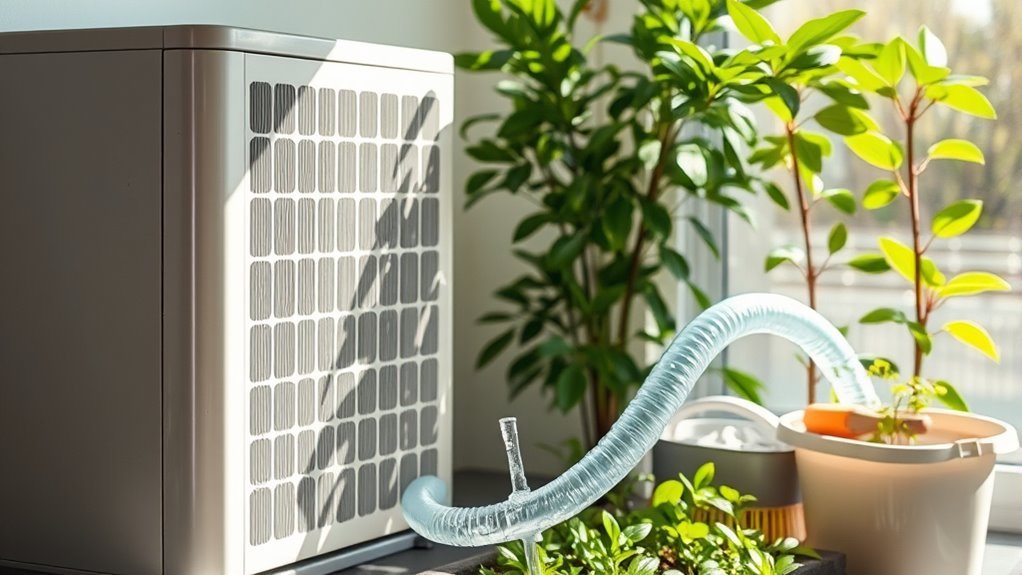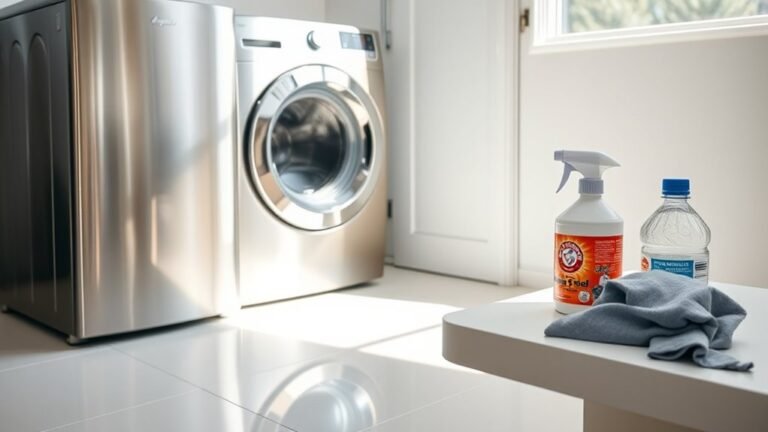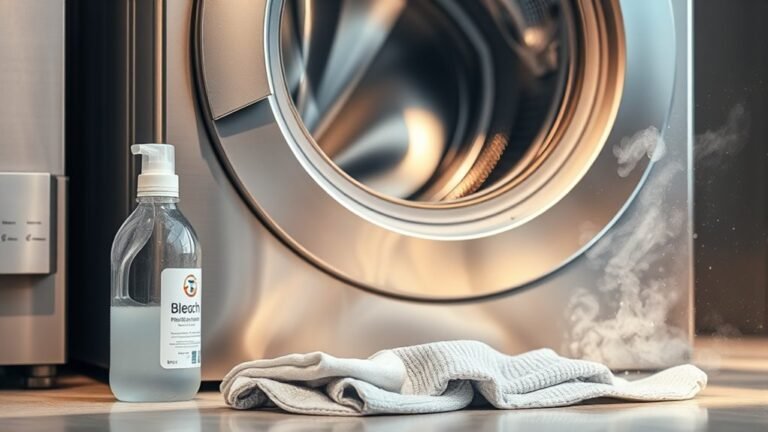How Often to Clean Ac Drain Line
You should clean your AC drain line every 1-3 months for peak performance and to prevent clogs. The frequency may vary based on climate and usage. Regular cleaning enhances efficiency and prevents buildup in the drain line. To get started, gather necessary tools like a wet/dry vacuum and vinegar. Make sure you turn off the AC before cleaning. Maintaining a regular schedule will keep your system running smoothly. There’s much more to learn about the cleaning process and long-term maintenance.
##
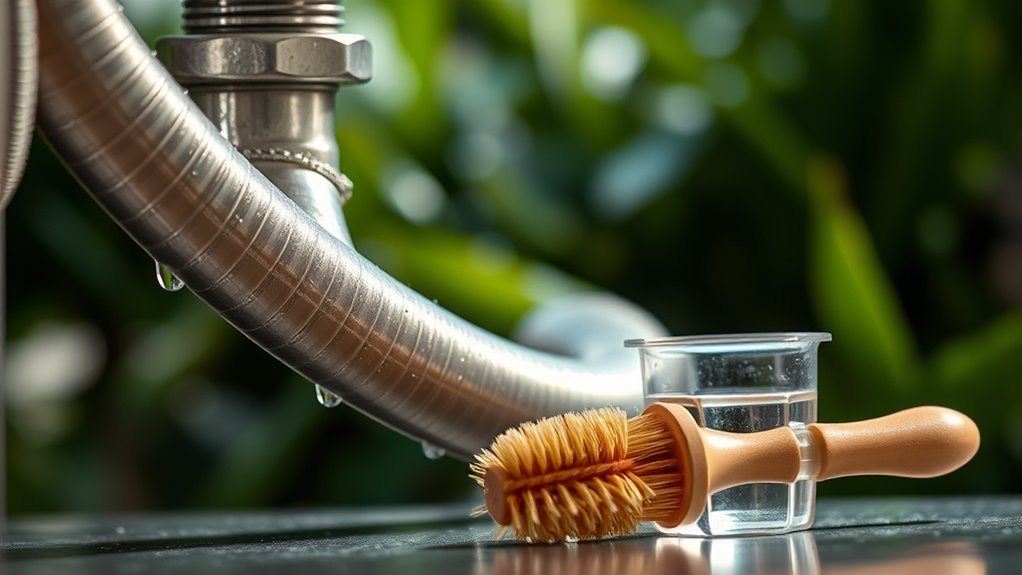
If you’re wondering how often you should clean your AC drain line, you’re in the right place. This article will provide you with essential insights into maintaining your air conditioning system for optimal performance. We’ll discuss recommended cleaning frequencies based on your climate and usage, as well as practical tips for inspecting and clearing any blockages. By the end, you’ll have a clear understanding of how to keep your AC drain line in top shape, ensuring both efficiency and longevity for your unit.
Preparation For Cleaning
Before diving into the cleaning process, it’s important to gather the right tools and materials. Start by reviewing your cleaning schedule to determine how often you should perform this task as part of your maintenance routine. You’ll need a wet/dry vacuum, a funnel, and a mixture of vinegar and water for effective cleaning. Verify you have access to your AC unit’s drain line, typically located near the air handler. Safety gear, such as gloves and goggles, can protect you from potential contaminants. By preparing thoroughly, you’ll streamline the cleaning process, making it efficient and straightforward. This proactive approach not only enhances your AC’s performance but also extends its lifespan, giving you peace of mind.
Tools and Chemical Required

Having gathered the necessary tools and materials, it’s time to focus on what you’ll need for the cleaning process. To effectively clean your AC drain line, you’ll require specific maintenance tools and cleaning supplies. Here’s a concise table listing them:
| Maintenance Tools | Cleaning Supplies | Notes |
|---|---|---|
| Screwdriver | Vinegar | Natural solution |
| Wet/dry vacuum | Baking soda | Deodorizes and cleans |
| Pipe brush | Bleach (optional) | For tough clogs |
| Hose | Commercial drain cleaner | Follow instructions |
These items guarantee you have the right approach to maintain your AC unit efficiently, preventing future issues and ensuring peak performance. Prepare well, and you’ll enjoy a cleaner system.
How to Clean:
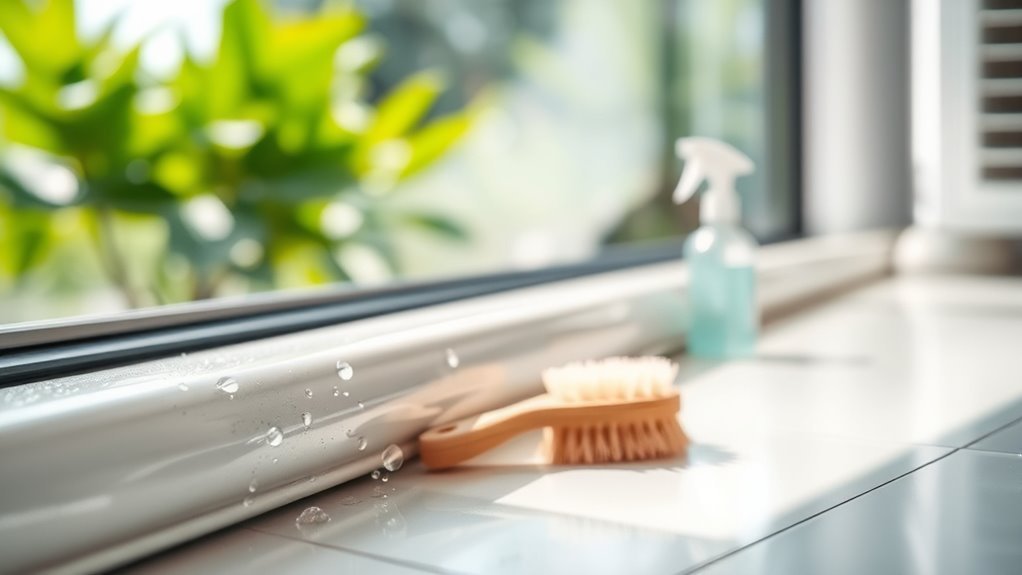
Step 1: Turn Off the AC Unit
- Before starting the cleaning process, ensure that the AC unit is completely turned off.
- This step is crucial for your safety, as it prevents any accidental activation while you’re working on the system.
Step 2: Locate the Drain Line
- Find the drain line, which is usually situated near the indoor unit of your AC system.
- The drain line is typically a PVC pipe that carries condensation away from the unit.
Step 3: Use a Wet/Dry Vacuum
- Take a wet/dry vacuum and attach it to the end of the drain line.
- Suck out any clogs or debris that may have accumulated in the line. This will help ensure that the drain line is clear and functioning properly.
Step 4: Establish a Cleaning Schedule
- To maintain the efficiency of your AC system, create a routine cleaning schedule.
- Aim to clean the drain line every 1-3 months, depending on your usage and environmental factors.
Step 5: Flush the Drain Line
- Prepare a mixture of equal parts vinegar and water.
- Carefully pour this mixture into the drain line.
- Allow it to sit for approximately 30 minutes. This step helps to break down any buildup and prevent algae growth.
Step 6: Rinse with Water
- After the vinegar solution has sat for 30 minutes, flush the line with clean water.
- This will help remove any remaining debris and ensure the line is completely clear.
Step 7: Check the Drain Pan
- Inspect the drain pan located beneath the indoor unit for any standing water.
- If you find any water accumulation, clean the drain pan thoroughly to prevent mold and bacteria growth.
Step 8: Complete Regular Maintenance
- Regular cleaning and maintenance of your AC system will help extend its lifespan and maintain optimal performance.
- Consider documenting your cleaning schedule and findings to track the condition of your AC system over time.
Safety Consideration
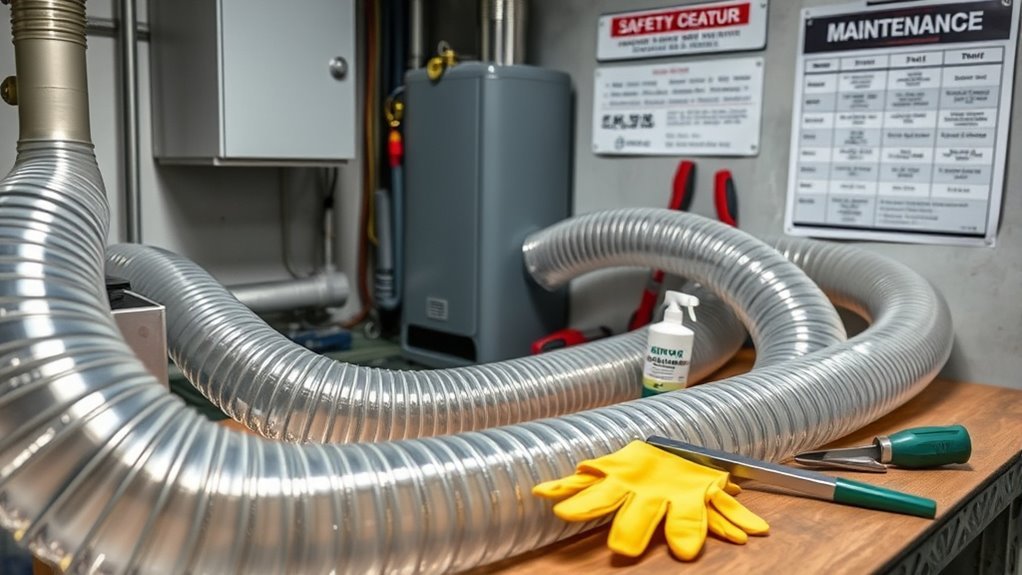
When cleaning your AC drain line, prioritizing safety is essential to prevent accidents and injuries. Following specific safety precautions can help you work confidently and effectively. Here are three key considerations:
- Wear Personal Protective Equipment (PPE): Use gloves and safety goggles to protect yourself from potential contaminants and debris.
- Turn Off Power Supply: Always switch off the power to your AC unit before starting maintenance to avoid electrical hazards.
- Use Proper Tools: Verify you’re using the right tools for the job, as improper equipment can lead to injuries or damage.
Tips to keep clean for long time
Maintaining a clean AC drain line is essential for peak performance and longevity, and there are several effective strategies to achieve this. First, implement preventive maintenance by flushing the drain line with a mixture of vinegar and water every few months. This helps dissolve any buildup. Additionally, schedule regular inspections to identify potential blockages early. During these inspections, check for algae growth and make certain the line is properly insulated to prevent condensation issues. Don’t forget to clear debris from around the outdoor unit, as it can obstruct airflow and increase strain on the system. Finally, consider installing a float switch that shuts off the AC if the drain line becomes clogged, providing an added layer of protection against water damage.
Frequently Asked Questions
What Are the Signs of a Clogged AC Drain Line?
If you notice water pooling around your AC unit or experience reduced airflow, those are clear signs of clogged symptoms. Additionally, you might detect musty odors, which indicate mold growth due to trapped moisture. To prevent these issues, regularly inspect the drain line, make certain it’s free of debris, and consider using a wet/dry vacuum for occasional cleaning. Keeping an eye on these factors will help maintain your AC’s efficiency and longevity.
Can I Use Vinegar Instead of Bleach for Cleaning?
Yes, you can use vinegar instead of bleach for cleaning your AC drain line. Vinegar benefits include its ability to effectively break down mineral deposits and mold without harsh chemicals. It’s a safer bleach alternative, minimizing harmful fumes and potential damage to your system. To use it, pour a cup of vinegar down the drain line, let it sit for 30 minutes, then flush with water. This method promotes a cleaner, functional AC system.
How Does a Clogged Drain Line Affect AC Performance?
A clogged drain line can severely impact your AC’s performance. When water can’t flow, it can lead to increased pressure and potential system failure. You’ll notice reduced cooling efficiency, higher energy bills, and even potential damage from overflow. The clogged consequences can escalate quickly, causing mold growth and compromising air quality if left unresolved. Regular maintenance guarantees your system runs smoothly, helping you avoid costly repairs and keeping your space comfortable.
Should I Hire a Professional for Cleaning?
Yes, you should consider hiring professional services for cleaning your AC drain line. While DIY methods might seem tempting, professionals bring expertise and specialized tools, ensuring a thorough job. The cleaning benefits include improved airflow, enhanced efficiency, and prevention of costly repairs due to clogs. By entrusting this task to experts, you’re not just maintaining your system; you’re also freeing yourself from the hassle and ensuring peak AC performance year-round.
How Does Humidity Affect the Frequency of Cleaning?
Humidity levels can greatly affect your AC drain line’s cleaning frequency. In areas with high humidity, mold and algae thrive, leading to blockages. Studies show that in humid conditions, cleaning frequency should be every three to six months, compared to once or twice a year in drier climates. By monitoring your environment, you can maintain ideal airflow and prevent costly repairs, ensuring your system runs efficiently and keeps you comfortable year-round.
